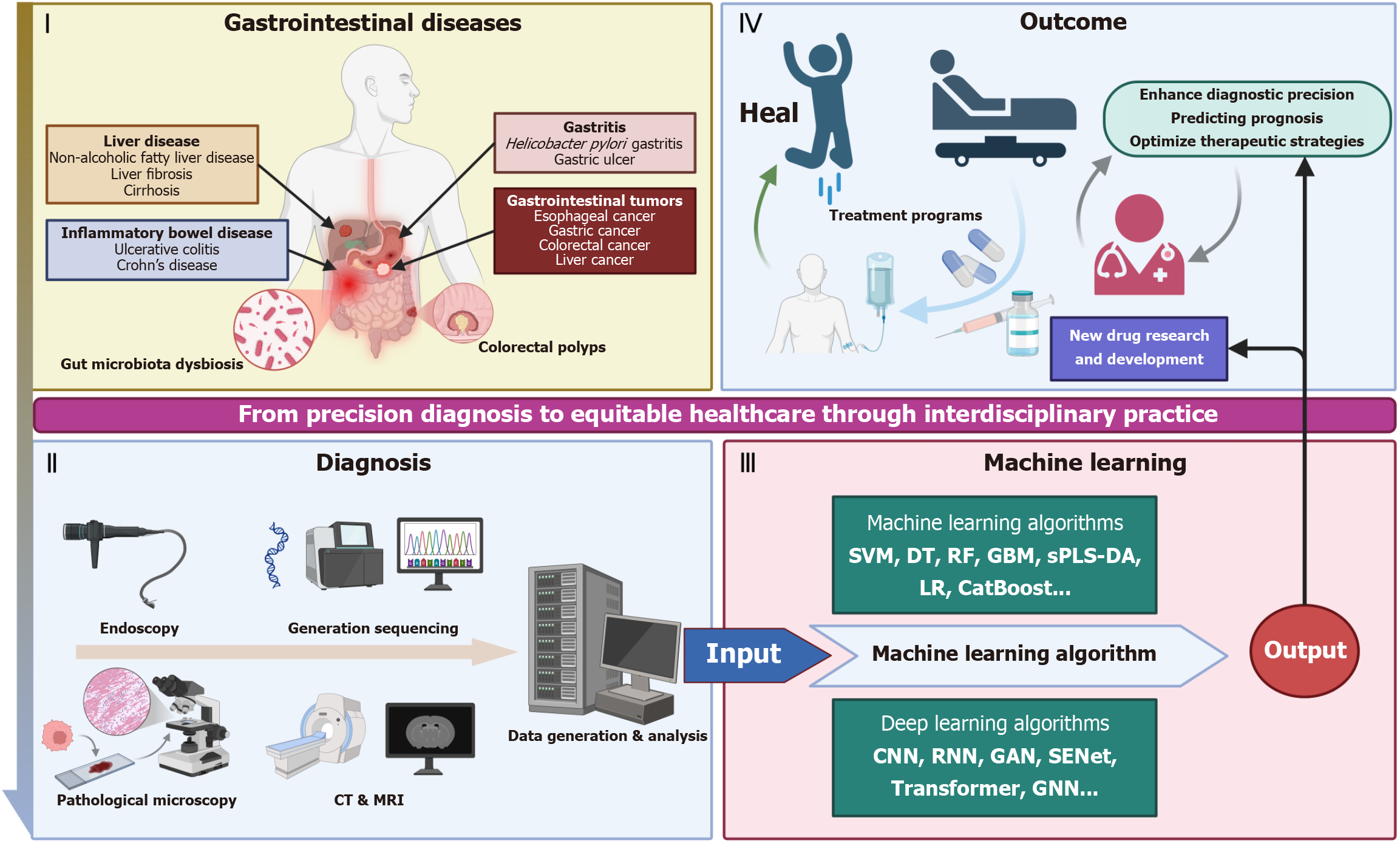Copyright
©The Author(s) 2025.
World J Gastroenterol. Jun 28, 2025; 31(24): 108021
Published online Jun 28, 2025. doi: 10.3748/wjg.v31.i24.108021
Published online Jun 28, 2025. doi: 10.3748/wjg.v31.i24.108021
Figure 1 Artificial intelligence in gastrointestinal diseases.
Section I (gastrointestinal diseases) includes liver diseases (metabolic dysfunction-associated steatotic liver disease, liver fibrosis, cirrhosis), inflammatory bowel disease (ulcerative colitis, Crohn’s disease), gastritis (Helicobacter pylori gastritis, erosive mucosal changes), gastrointestinal tumors (esophageal cancer, gastric cancer, colorectal cancer, liver cancer), and colorectal polyps, with gut microbiota dysbiosis as a contributing factor. Section II (diagnosis) involves techniques such as endoscopy, generation sequencing, pathological microscopy, computed tomography and magnetic resonance imaging, followed by data generation and analysis. Section III (machine learning) presents algorithms: Machine learning algorithms (support vector machines, decision tree, random forest, gradient boosting machine, sparse partial least squares-discriminant analysis, logistic regression, CatBoost) and deep learning algorithms (convolutional neural network, recurrent neural network, generative adversarial network, squeeze-and-excitation network, transformer, graph neural network), which process input data. Section IV (outcome) demonstrates the therapeutic cycle: Treatment programs lead to healing or hospital care, promoting new drug research and development. Ultimately, it enhances diagnostic precision, predicts prognosis, and optimizes therapeutic strategies, embodying the journey from precision diagnosis to equitable healthcare via interdisciplinary practice. CT: Computed tomography; MRI: Magnetic resonance imaging; SVM: Support vector machines; DT: Decision tree; RF: Random forest; GBM: Gradient boosting machine; sPLS-DA: Sparse partial least squares-discriminant analysis; LR: Logistic regression; CNN: Convolutional neural network; RNN: Recurrent neural network; GAN: Generative adversarial network; SENet: Squeeze-and-excitation network; GNN: Graph neural network.
- Citation: Chen ZL, Wang C, Wang F. Revolutionizing gastroenterology and hepatology with artificial intelligence: From precision diagnosis to equitable healthcare through interdisciplinary practice. World J Gastroenterol 2025; 31(24): 108021
- URL: https://www.wjgnet.com/1007-9327/full/v31/i24/108021.htm
- DOI: https://dx.doi.org/10.3748/wjg.v31.i24.108021









